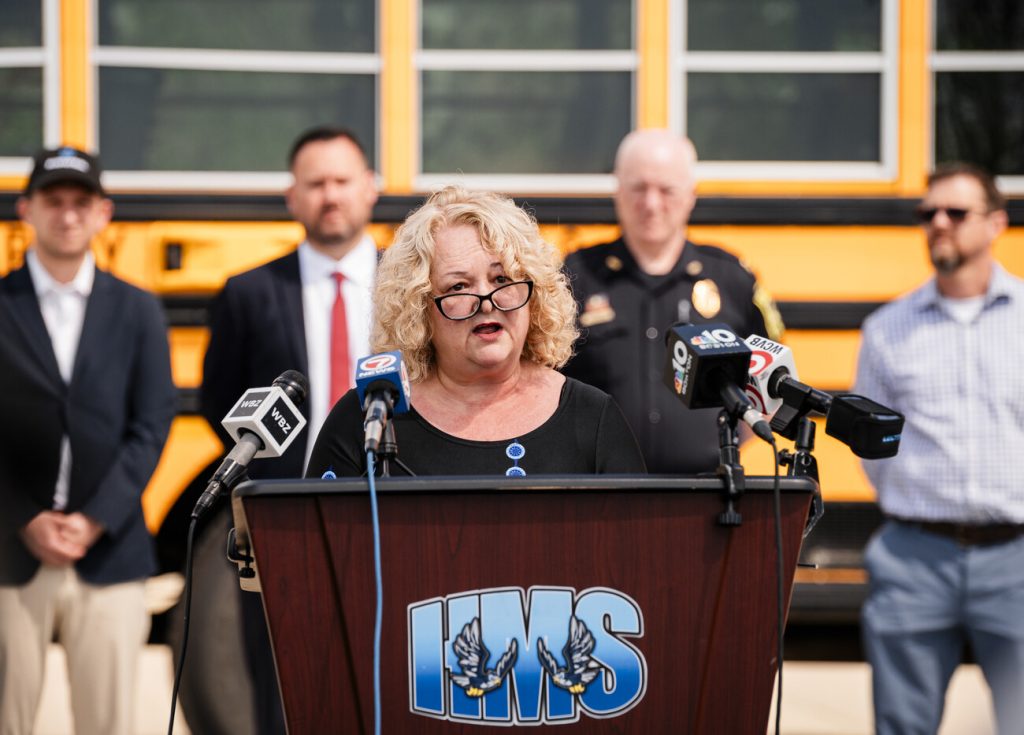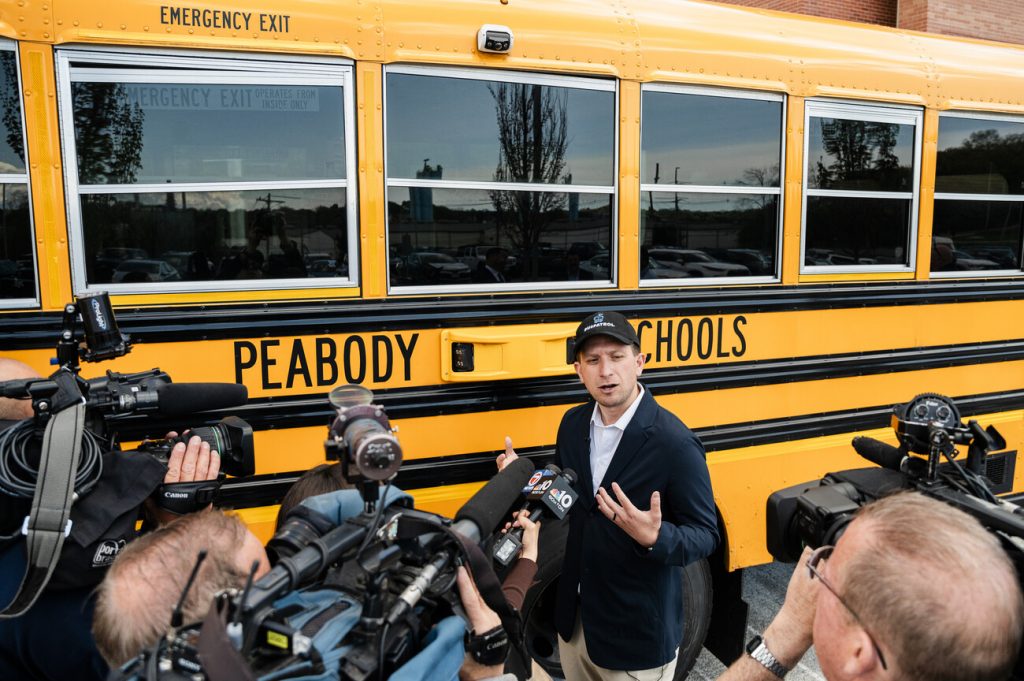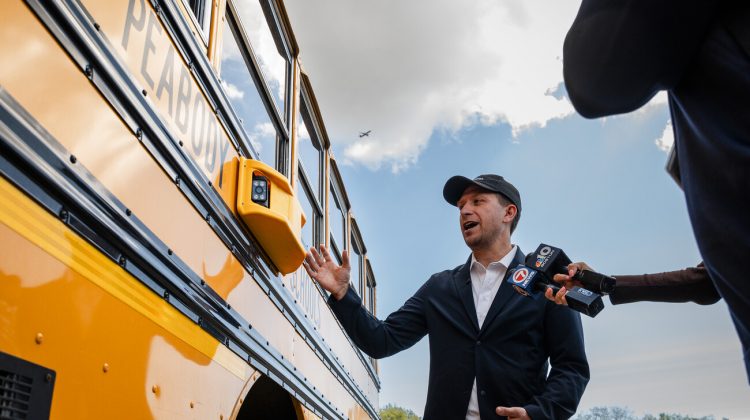PEABODY — City officials, speaking outside Higgins Middle School on Monday, expressed concern over an alarming rate of illegal school-bus passings after a pilot program recorded almost 3,500 vehicles that failed to stop for buses that were picking up or dropping off students since the start of the school year.
To record the cars, the school district and BusPatrol, an organization that works with schools to equip their buses with AI-powered technology, partnered up. The illegal passings were recorded after AI-powered stop-arm cameras were placed on 10 school buses.
Maria Scheri spearheaded the effort. Scheri founded the advocacy group S.T.O.P. the Operator from Passing, which campaigns for student-transportation safety.

“I got really frustrated and fed up by seeing disrespectful driving behavior surrounding school zones and school-bus stops in my community,” Scheri said.
She said that it was when she saw a non-emergency ambulance pass an extended stop sign that she knew there was a serious problem and something had to be done before somebody got killed or injured.
Mayor Ted Bettencourt said that having the initial data was very helpful, as conducting an “eye test” and recognizing that there are issues on the road was not enough.
“We needed data to make things happen, to try to give the police the tools they need in order to enforce these rules and enforce these city ordinances and state law to make it happen,” Bettencourt said.
Superintendent Dr. Josh Vadala said that the data made officials realize the scale of the issue.
“When we found out that there was an opportunity to take a look at some data and to see the real scope of things, we realized that this issue was a lot bigger than we could have ever imagined,” Vadala said. “And we wanted to keep our children safe.”
Vadala said that the district is able to use this data to partner with the Police Department to increase patrols around the areas where violations are happening most frequently.
BusPatrol Chief Growth Officer Steve Randazzo said that there are 30 buses in the city’s school district, which means that there could have been more than 10,000 violations in total if the data from the 10 buses in the pilot program were to be extrapolated.
“Something has to change,” Randazzo said.
A bill, which was recently referred to the Massachusetts House Committee on Ways and Means by the Joint Committee on Transportation, would allow law-enforcement agencies to use stop-arm-enforced camera systems to punish motorists who illegally pass school buses. Nearby states such as Rhode Island, Connecticut, New York, and Maine have already legalized similar programs.
Randazzo said that bills allowing the use of cameras, in some shape or fashion, have already been introduced every year throughout the past 10 years.

“Where it has typically gotten stuck in the past is in the Ways and Means Committee,” Randazzo said. “I think it’s just a matter of priorities, lots of competing priorities that the state has had over the years. And so we’re trying to create awareness around this issue so that it actually gets some attention.”
Police Capt. Scott Richards said that the way the vehicles operate is an “accident waiting to happen.”
“If this bill passes, it will give us the ability to be able to enforce this law and cite folks,” Richards said. “And when we start citing people, when they start getting that cite in the mail and having to pay the ticket, it’s gonna curb their behavior.”
The House bill states that “all systems installed for use under this section shall produce an evidence file that includes a live visual image viewable remotely, a recorded image of the license plate and the capacity to record the date, time, and location of the vehicle committing the violation. A law-enforcement officer, or law enforcement’s approved technician, shall review the video and decide whether a violation occurred.”
“We can cite every one of these violators without having a police officer on site,” Richards said.
Randazzo explained that the license-plate-reading cameras are able to scan traffic, record footage, and detect violations. The video-evidence package is then transmitted securely, making it easy for officers to view the evidence on computers.
Bettencourt said the areas of concern in the city are main streets like Washington Street, Lynn Street, and Lynnfield Street. He emphasized that the issue is not just a problem for the city, but one for all municipalities in the state and across the nation.


